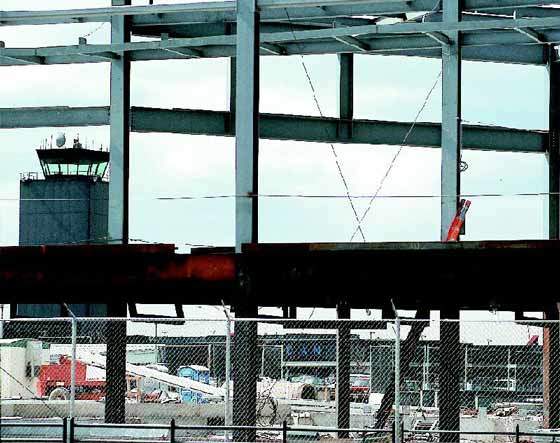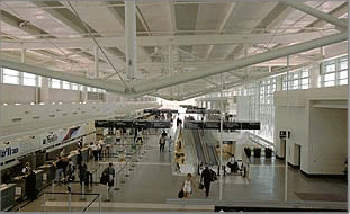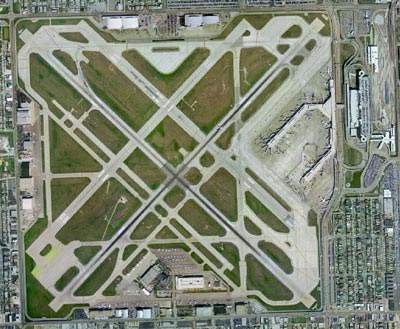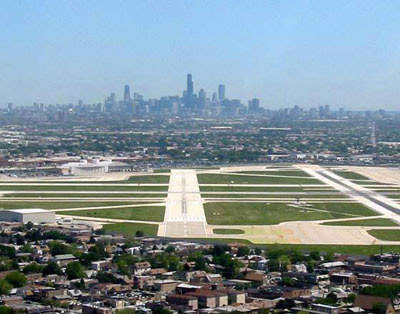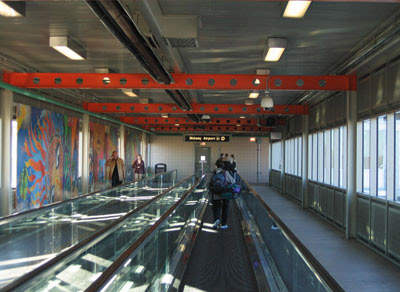Midway Airport, Chicago, has undergone a program of expansion in order to cope with the inordinate rise in air traffic in the region. Thanks largely to the success of carrier Southwest Airlines, 9.8 million air travellers passed through Midway Airport in 1998 and by the end of 2005 this had increased to 17.7 million (Southwest controls 29 of the 43 gates).
Midway used to be one of the busiest airports in the US before O’Hare opened. The expansion was sponsored by Chicago’s aviation department, which owns the city’s three major airports (O’Hare, Midway and Meigs Field).
The plan to expand capacity at Midway and O’Hare is the subject of political dispute between Mayor Daley of the City of Chicago and the Governor of Illinois who would prefer a new airport in Peotone.
Midway Airport is important to the regional economy because it provides $2.8bn of annual personal income and nearly 50,000 jobs in the local area. The expansion of the existing facilities has so far won out thanks partly to the backing of all major airlines. However land around the 840ac airport is very scarce and so any major expansion in size, such as the development of a new runway, would be all but impossible.
PROJECT MAKE-UP
The expanded airport is being used as a growth pole for the surrounding area. The Cicero Avenue area is going through commercial redevelopment, which seeks to exploit the presence of air travellers in the area. But the expansion of airport capacity is more necessary to cope with the rise in air traffic. When the project is complete, the airport is expected to serve 17 million passengers per year.
The city aviation department worked on feasibility studies from 1995 to 1997. The project was officially announced in 1997 and involves several stages. The first major achievement was the completion of a six-storey car park in July 1999. In March 2001 the new Midway Terminal building opened.
The airline gates and concourse were opened in October 2001 and a new customs facility opened in 2002. The new 43-gate concourse was completed in 2004. All of these projects were completed without reducing the efficiency of the airport.
FINANCE
The $722m project was financed through city revenue bonds, which are being paid for through airport revenues. These were originally approved by the City Council in late 1996, when $254m was raised. In 1998, a further $600m was raised through bonds, handled by JP Morgan.
MIDWAY TERMINAL CONSTRUCTION
Kenny Construction Company was awarded a $660m contract in 1997 to provide general construction management services as part of a multi-year joint venture to revitalise Midway International Airport.
The Chicago Department of Aviation launched the Midway Airport Terminal Development Program in 1997 to replace the terminal built half a century earlier and allow for more efficient use of existing airfield space. Kenny Construction was selected to oversee a nine-phase project that included demolition of the existing terminal and concourse buildings, and construction of a new 950,000ft² terminal and concourse and 260,000yd² of new aircraft aprons and taxiways.
Services provided by Earth Tech include management of construction, operations, project controls, quality assurance, estimating, construction inspection and field engineering.
Roofs Inc was also part of the Midway Airport expansion project. It installed fully adhered and mechanically attached Johns Manville Roofing System’s UltraGard PVC membrane roof systems on the parking garage from 1997–1999. The project involved two helixes, three elevator towers and other roof entry areas.
In 1999, Roofs Inc was awarded a contract to install PVC membrane roof systems on the Midway Terminal Building, concourses, and pedestrian bridge, which expands over Cicero Avenue to connect the Midway Terminal Building to the original terminal and concourse building. This 470,000 ft² (43,663 m²) roofing project was completed in March 2004.
Northwind Midway, a division of Exelon Thermal Technologies, won the contract for the terminal’s heating and cooling systems. As from March 2000, the 75% installed energy plant, including ice storage, is capable of providing 3,675t of refrigeration capacity during peak output hours. Environmental Systems Design Inc of Chicago became involved with the new Midway Terminal Development Program as the design engineering firm for the HVAC systems.
Construction was able to take place while the existing airport was in full operation. The construction management (Landrum and Brown provided planning services) started extensive conceptual planning in 1994 and included rerouting and replacement of underground utilities, and realignment of South Cicero Avenue and concurrent reconfiguration of adjacent streets and intersections.
Other staged work included building a new parking garage and pedestrian bridge before demolition of the old structures and removing other structures in sections to preserve mechanical features such as air-handling units supplying operating sections of the facility. The $660m project, which included $550m in construction costs, was fully completed in 2004.
The new Midway International Airport features three times the amount of space and a 100% increase in concession services. It serves some 17 million passengers a year with 43 gates and larger concourses.
The Midway Airport Terminal Development project was completed on time and on budget, in spite of a 65% increase in passenger traffic during construction and the challenges of addressing heightened airport security requirements in the wake of the 9/11 tragedy. The joint venture responsible for construction management of the project was known as Kenny-Rust-Midway (KRM).
OTHER PROJECTS
Later projects at the new terminal (2005) have included an in-line Explosive Detection System (EDS) that enhances the security of the baggage check-in process while also freeing up queuing space in the ticketing lobby.
The Capital Investment Program (CIP) also includes development of a consolidated rental car facility, noise mitigation projects, additional car parking space (another new parking garage is being built) and airfield rehabilitations.

